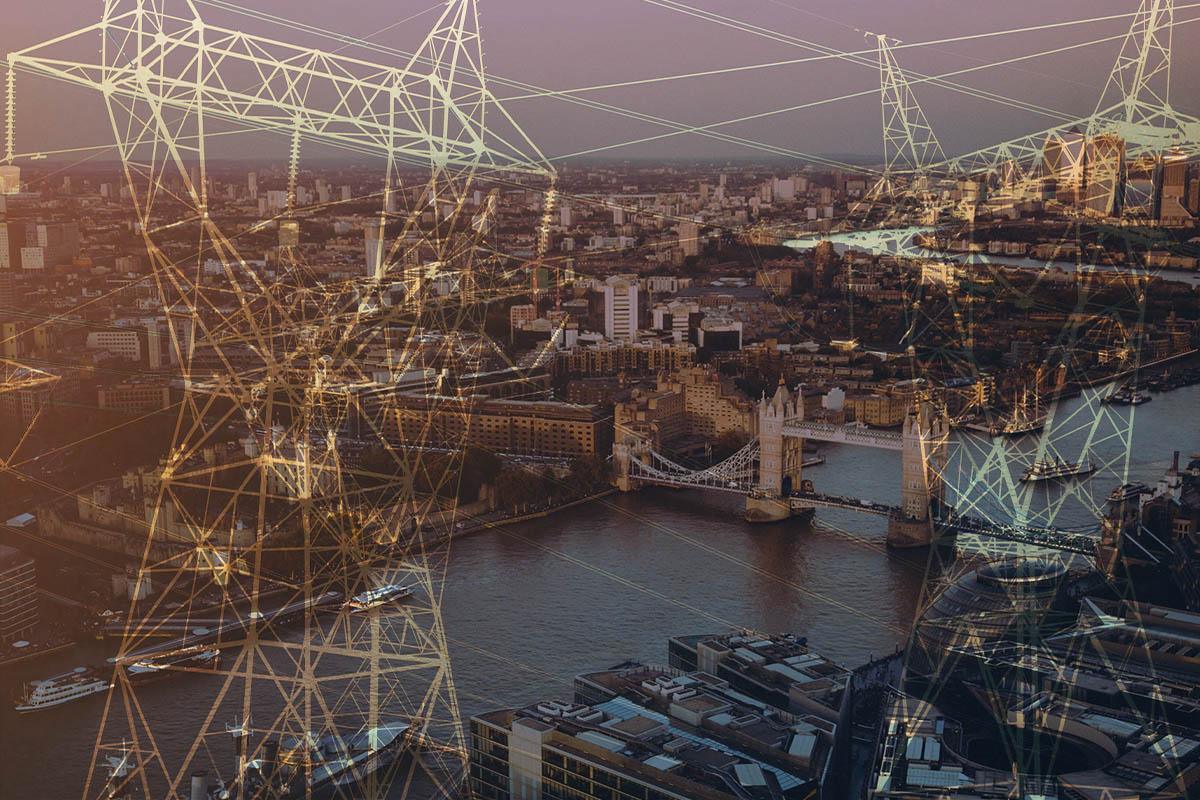
Thought
No Grid, No Growth: The Hidden Risk in Your Portfolio
Series: The UK’s Grid Electrification | Part 2/3
With grid constraints, rising costs, and Net Zero mandates, energy management is now a core part of asset strategy. If you have an investment target for 2030, it’s no longer enough to just buy green power – your buildings need to be part of the solution.
The End of ‘Set and Forget’ Energy Contracts
Real estate investors betting on long-term energy contracts to provide stability are in for a shock. The UK grid is under pressure, and waiting years for a new connection – or paying premium rates for peak-hour electricity – will be the new normal. With Net Zero deadlines looming, the smart money is on buildings that can generate, store, and manage their own power. Those who don’t adapt risk higher costs, stranded assets, and losing tenants to competitors who planned ahead. But the burden won’t be distributed equally among all UK assets.
Some Assets Will Feel the Grid Squeeze More Than Others
Some locations are already struggling to supply new connections, and the issues aren’t just regional – they’re hyper-local. While major grid constraints in West London, the Scotland-England border, and parts of the Southwest are well known, there are also bottlenecks at the city block level. A high-rise refurbishment in Manchester or a logistics expansion in Birmingham could be delayed simply because the local substation lacks capacity. If you own assets in these regions, expanding energy supply could be a multi-year battle, or worse – a non-starter without significant investment.
Growing competition for grid capacity is making it harder to secure the power needed for expansions, tenant growth, or gas system removals. In some cases, increasing an existing supply isn’t even an option. Securing a new connection for refurbishment or development projects is facing long delays, adding both time and cost uncertainties for investors.
Investors should be asking two key questions: Do my assets have the power supply to support future growth? And just as importantly, what’s happening at the hyper-local grid level that could impact my risk exposure? The answer to these questions will dictate long-term asset value, tenant retention, and whether a building can actually meet its Net Zero commitments – or end up stranded due to lack of available power.
Net Zero Means Rethinking Energy
Most real estate Net Zero strategies still treat buildings as energy consumers. That mindset is outdated. The most resilient buildings will be those that generate, store, and manage their own power.
Matt Browne, Associate Director at EVORA, explains: “In our Net Zero work, we typically focus on how a building can meet its own energy demand. For example, we might recommend covering half the roof with solar panels – enough to supply the building’s needs – and adding battery storage to ensure power is available when solar generation drops. But that’s just the starting point.
The bigger question is: what do you do with the rest of the roof? Do you invest in more solar panels and battery capacity to generate surplus energy and play the market – selling power back to the grid when prices are high and storing it when rates drop? The shift we’re seeing isn’t just about meeting on-site demand; it’s about whether buildings should become active participants in the energy system.”
Take logistics hubs, for example. With the rise of EV trucks, industrial landlords will soon need to provide high-capacity charging. The challenge? Most warehouse parks weren’t designed for that level of power demand. The landlords who plan ahead by securing grid capacity now, and investing in on-site renewables, will have a major advantage over those who wait.
For manufacturing tenants, the stakes are even higher. Many rely on gas for high-intensity heat processes, and moving to electricity isn’t just expensive, it’s often technically difficult. If the grid can’t support their energy transition, investors could see tenants facing soaring costs or struggling to meet their own Net Zero targets. And because those emissions count toward a landlord’s Scope 3 footprint, the problem isn’t just the tenant’s – it’s yours, too.
We dive deeper into sector specific challenges in our third article on the topic.
Lease Agreements Need to Evolve
Energy costs and flexibility are now investment factors. Some landlords are holding onto rooftop rights, installing solar panels, and selling power back to tenants. Others are incorporating battery storage into lease agreements, allowing tenants to use stored power at peak times. A decade ago, no one was talking about this. Now, it’s a competitive differentiator, and investors with ambitious Net Zero goals need to build these elements into lease structures sooner rather than later.
At a portfolio level, there’s an opportunity to rethink asset ownership boundaries and how leases are structured altogether. In a typical FRI lease, tenants take responsibility for the roof and its maintenance. But what if landlords retained control, using it for solar or other on-site generation? The same applies to unused land – rather than leaving it within a tenant’s demised area, landlords could hold back space specifically for battery storage. These shifts come with legal and contractual considerations, but as the grid evolves, so should lease agreements. The assets best positioned for energy flexibility will have the strongest competitive edge in the years ahead.
If peak-hour electricity prices surge, tenants who can draw from on-site battery storage avoid those high tariffs, keeping operating costs in check. That’s not just good for sustainability – it’s a clear selling point for tenant retention.
The role of a building owner is shifting. You’re not just leasing space anymore; you’re also managing an energy ecosystem. Investors who understand that will be in a stronger position as the grid transitions.
Energy Access Is the New Battleground for Real Estate
Staying ahead of grid constraints means acting now. Start by identifying assets in high-risk areas where limited capacity could stall development or tenant growth. Increasing supply is an upfront investment that needs to be factored into due diligence. In competitive markets, assets with secured power capacity will have an edge, making energy availability a potential selling point in both lease negotiations and long-term asset valuation.
For refurbishments and new developments, early engagement with Distribution Network Operators (DNOs) is critical. Long lead times and rising costs for grid upgrades mean that waiting until a project is underway could result in costly delays.
Investors should focus first on their highest-consumption assets, where energy flexibility is a financial strategy that could make or break long-term asset value.
Out Net Zero team is here to help you navigate these challenges – get in touch to learn more.













